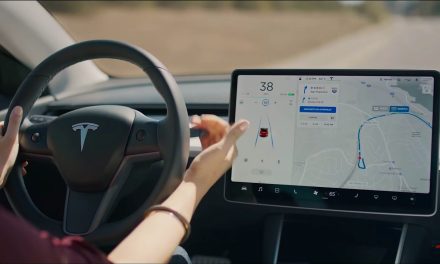Will Tesla’s Price Cuts Prove To Be A Challenge For Ford CEO Jim Farley’s Plan?
The world of electric automobiles is ever-changing, with pioneers like Tesla leading the way in innovation and others trying to hop on their bandwagon. Alternate energy technology and affordable electric cars are becoming more accessible to the masses day by day, revolutionizing the automobile industry as we know it. Recently, Ford CEO Jim Farley made some strong statements about Tesla, indicating an increasing rivalry between the two long-time partners.
But, is Tesla competing in the same market as Ford?
Will Ford be able to match the standards set by its “next big test” competitor?
In a recent interview, Farley acknowledged that Tesla’s price cut approach echoes the significant auto industry shift around a century ago, when Ford’s Model T hit the market at an incredibly low cost.
“I think this is really one of Tesla’s most challenging moments,” Farley told Fully Charged podcast host Robert Llewellyn. “They got through Model 3 and Model Y commercialization in the plant and scaling production. The next big test turns out to be their heavy discounting to stimulate demand, which is a sugar high, and it continues to deteriorate the elasticity.”
“Less and less people are signing up as you cut the price. This is what Henry Ford found out with the Model T — that you commoditize your product when you’re telling people, Hey, the price is what really matters,” Farley added.
“I think we’re basically where we were with Model T,” he added. “Henry Ford was only a year away from going bankrupt.”
Farley said he sees Tesla and the Chinese automakers as major competitors, not GM or Volkswagen. BYD.
“This should be no surprise to anyone. We’ve been watching this for years now play out. I’ve always said that our main competition in the pure electric space is going to be BYD and Geely and Tesla,” Farley said. “It’s not General Motors. It’s not going to be BMW or Volkswagen.”
Farley also emphasized the need for vertical integration in the age of electrification — yet another way many automakers are having to mimic Tesla — as well as reducing the industry’s dependence on China’s battery supply chain.
“We now pretty much vertically integrate all the raw material purchases. We’re going to the mine and buying the raw materials and then arranging for the processing — all the way to our battery plants, that’s all new,” Farley said. “When people buy that electric car, they probably have no idea how much of a shift it is.”
While Tesla has managed to gain popularity in the lower-end and mid-range automotive market, Farley’s strategy seems to be to move towards high-end cars.
“We don’t want to make commodity products,” Farley said. “We want to participate in the part of the market where Ford knows the customer really well and we can innovate on their behalf for things that they don’t know they need.”
“We don’t want to just make another generic, affordable EV, because I think there’s going to be plenty of those,” Farley said. “It’s an open playing field.”
Despite the competition and rivalry between the two companies, they have worked together on some projects. Ford and Tesla were both trying to attract government attention to electrification. The two companies struck a deal under which Tesla would supply parts to Ford for their electric cars. However, it appears from Farley’s statements that Ford wants to establish itself as a complete and separate entity in the electric vehicle market.
Recently, Musk has targeted Ford with the launch of Cybertruck vs. F-150 rivalry in a Cybertruck marketing stunt that skinned a Cybertruck to look like F-150. Ford has recently mimicked Tesla’s price cuts as Ford cut the price of F-150 Lighting by $10,000.
Farley’s recent plan to electrify commercial vehicles, larger, three-row crossovers, pickup trucks, and high-performance vehicles, puts Ford in a position to make a significant impression in the electric vehicle market. He plans to cater to the customers in segments that Ford knows well, providing them a unique buying experience. While Farley plans to operate in niche segments, Tesla’s low-cost, zero-emission vehicles still appeal to most customers.
Ford is targeting the high-end car market, but Tesla might try to take the core segments once again with its new price cuts. Although Tesla has been relatively successful in bringing down the prices of its electric vehicles, it remains to be seen whether the company can get ahead. The Model T’s success formula is something that companies like Tesla have been trying to replicate for a long time. However, the market is saturated with electric vehicles, making it harder for companies to establish themselves as leading brands.
Competition is always a healthy sign for any industry. Bringing in new ideas, innovations, and creativity to the forefront is sure to benefit the customers. The automobile industry’s future is EV (electric vehicle), and it would be interesting to observe the rivalry between these automobile giants from a distance. Ford has made its intentions clear of catering to market segments that the company knows like the back of its hand. Tesla’s recent price cuts might force Ford to rethink its strategy, but it remains to be seen what the future holds for both companies. The journey to sustainable and alternate energy technology is a long and arduous one, and only time will tell which company will emerge from the competition as a leading brand.






